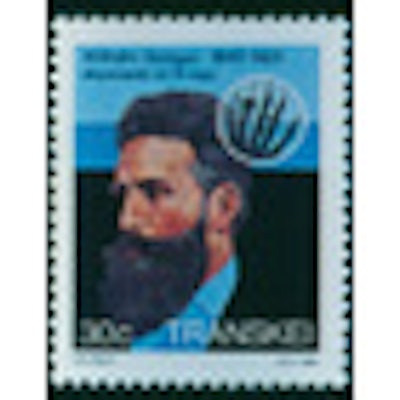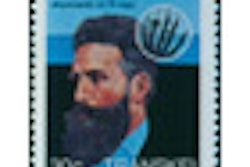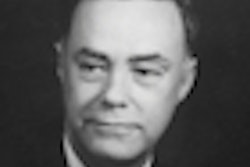
Before the 1960s, U.S. gynecologists and surgeons had a difficult time detecting and operating on breast cancers in women. In those decades, radiologists had not yet been able to conduct and interpret reliable breast cancer x-ray exams to localize small lesions.
The only two U.S. radiologists who had attempted such exams were Dr. Stafford Warren at the University of Rochester and Dr. Jacob Gershon-Cohen in Philadelphia.
In 1956, as development of the MD Anderson Cancer Hospital in Houston expanded, its crew of radiologists suddenly was assigned to develop an x-ray technique for women with breast cancer. Some years earlier, MD Anderson's president and surgeon Dr. R. Lee Clark had hired Dr. Gilbert Fletcher to help treat cancer patients and to develop a more diagnostic radiology system. In 1955, Fletcher recruited Dr. Gerald D. Dodd from Thomas Jefferson Memorial Hospital in Philadelphia, and Dodd brought along Dr. Robert L. Egan to finish his radiology residency.
Egan was born in 1920 in a small town in Arkansas. After beginning his education at the College of the Ozarks, he was appointed to the U.S. Naval Academy; however, he was released a year later with an eye problem. Back at College of the Ozarks, he obtained a degree in metallurgical engineering.
When the U.S. entered World War II at the end of 1941, Egan was recalled to the Navy and remained there until 1946. By then, he had decided to become a doctor and enrolled at the University of Pittsburgh School of Medicine. After two years as a general doctor, he opted to become a radiologist. He was accepted at Jefferson Medical School for residency, and then two years later he went to Houston to follow Dodd.
In 1956, French radiologist Dr. Jean Pierre Bataini visited MD Anderson and showed a routine female chest x-ray. Egan, with his engineering training, was assigned to develop a breast imaging technology for the many female cancer patients who came to the hospital. He experimented with a particular x-ray film device from Eastman Kodak and showed the device to MD Anderson gynecologists, surgeons, and pathologists.
Clark invited the chief of the cancer control program at the U.S. Public Health Service, Dr. Lewis C. Robbins, to come and see the breast x-rays. Robbins was impressed and agreed to fund Egan to teach other radiologists and their radiologic technologists the technique. After a small session of a dozen radiologists and technicians, Robbins urged the MD Anderson team to invite the American College of Radiology (ACR) to begin educating radiologists on how to conduct mammograms.
Egan presented reports on his projects at RSNA meetings in 1960 and 1961, which gained national attention, and with Public Health Service support, he offered short weekly courses for other radiologists and technologists. Also, Dr. Edgar White, a leading MD Anderson surgeon, began endorsing mammographic x-rays.
ACR created a national mammography committee and arranged for annual breast x-ray conferences. Egan also began to travel frequently to lecture at various radiology and medical society groups, urging that radiologists use basic x-ray tools and the special mammographic films.
In the early 1960s, Dr. John Wolfe, a radiologist in Detroit, experimented with the use of Xerox plates rather than routine x-ray films, and acquired images of various anatomical regions, including the breast. ACR and the American Cancer Society urged Xerox to develop dedicated systems for mammography and other anatomical regions. The company agreed and marketed its products for several years.
After his first years at MD Anderson, Egan decided to move from Houston to the Methodist Hospital in Indianapolis. He continued to spend time traveling in the U.S. and in several other countries to preach about breast imaging and cancer detection, which had become known as the "Egan method."
In 1965, the technique received additional attention through U.S. Surgeon General Dr. Luther Terry. Terry called attention to an article in the American Journal of Surgery that said radiologists trained in the method had 79% accuracy in detecting malignancies. But the article stopped short of recommending mass screening, with Terry commenting that the question would have to be investigated further -- a portent of the debate that continues to this day.
Also that year, Egan contacted Dr. Heinz Weens, chief of radiology at Emory University in Atlanta, and offered to join the institution, bringing Public Health Service funds that would support his continued work in breast imaging. Weens accepted and appointed Egan as a department member.
In the coming years, many national conventions were scheduled in Atlanta with the support of the ACR mammography committee and the American Cancer Society, which also moved its national headquarters from New York City to Atlanta. Egan concentrated on his mammography projects, developed publications, continued to visit radiology societies, and was able to secure continued federal funding for his efforts.
By the 1980s, ACR and the American Cancer Society had both issued recommendations that women 40 or older should obtain yearly mammograms. In 1992, the U.S. Congress enacted the Mammography Quality Standards Act (MQSA), which strengthened federal regulation of mammography through the U.S. Food and Drug Administration.
But controversy continued to swirl around breast screening, and critical reports occasionally appeared in the literature from those who were skeptical of annual mammography -- a debate that continues.
Egan was nearing his senior years, and in the late 1980s he retired from his Emory University appointments. However, he continued to write articles occasionally and to participate in the university's radiology department. In 1992, he was awarded a gold medal from ACR. He died in Atlanta in 2002.
Otha W. Linton, MSJ, retired in 1997 as the associate executive director of the ACR after 35 years. He also served as executive director of Radiology Centennial in 1995. Mr. Linton holds a bachelor's degree in journalism from the University of Missouri and a Master of Science in journalism from the University of Wisconsin. His work has been published widely in the U.S. and abroad, and he is a regular contributor to several journals including Academic Radiology, the American Journal of Roentgenology, Radiology, and the Journal of the American College of Radiology. He joined the ACR staff in 1961 and had a key role in its growth. Over the years, his responsibilities with the ACR included government affairs, public relations, marketing, publishing, industrial liaison, and international relations. Just before his ACR retirement, he became the executive director of the International Society of Radiology and served in that role until 2012. Also, since his retirement, he has written and published several histories of radiology societies and academic centers.



















